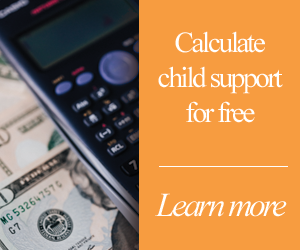Up to this point we have discussed “divorce negotiations” but have not written much about the specific issues you will be negotiating. There are four major issues in divorce: property division, alimony, child custody, and child support. If you don’t have children, or they are adults, you will have less work to do. Because these are the major issues of divorce, each receives complete attention in its own article on this site; at this juncture, we would like to clarify what each issue involves and give you some initial thoughts to consider.
Everyone realizes that getting divorced involves dividing up property, but not many people know exactly what property is included and excluded from the distribution or whether the division is fifty-fifty or some other ratio. For most people, the process of property distribution during divorce is fairly simple. Unless you or your spouse owns a business or other asset that is difficult to value, you can avoid most of the complexity involved in dividing your property.
The first step of property distribution involves identifying all of your assets and debts. This relates back to the step above, in which we told you about the need to prepare your financial information. On top of the mortgage and bank and retirement accounts, which you might have documented by gathering recent statements, property division also involves things such as furniture, silver and china, cars, boats, and tools. Ideally, you and your spouse will be able to decide who gets all of these items without the need for a judge. As usual though, consideration of what a judge might do can help keep the negotiations within reasonable bounds.
State laws provide for one of two major approaches to dividing your property: community property or equitable distribution. In states using the community property approach, items considered marital property are divided equally. It is a simple system but does not take into account the contributions made by either spouse to the pool of marital property, so it can produce what some consider unfair results. Arizona, California, Idaho, Louisiana, Nevada, New Mexico, Texas, Washington, Wisconsin, and Mississippi (modified) are community-property states.
Equitable distribution is the other approach to property distribution. In this more modern system, the property is divided in a way that is intended to be fair. That means it may not be an equal distribution. When a judge is involved, he or she is generally guided by state laws as to the factors taken into consideration when making the determination of what is equitable. These factors are likely to include your standard of living, the amount you contributed to the marriage (potentially including domestic work that allowed a spouse to prosper), and how long you were married. Although judges are given the discretion to make unequal distributions, most cases result in equal splits, even in states using the equitable distribution system.
States vary in what they consider marital property. Some states consider all property part of what is to be divided. Most have a concept of exempt property. This is generally property you brought into the marriage or inherited. Exempt property may include gifts given directly to you as opposed to the both of you. The challenge here, especially in long marriages, becomes documenting that the property has not become comingled with the marital property. Comingling occurs when, for instance, an item you received in an inheritance is sold and the funds received are then combined with marital funds to purchase another item. This newly purchased item is marital property, and is therefore subject to the division process.
A major challenge in the property division process is agreeing on the value of your assets. Generally, the person who wants to keep an item attempts to assign it a lower value. Discrepancies can also occur when people fail to take into account that items should be valued at fair-market value, which is usually far less than what they were bought for, even though they may not be very old.
The next major issue of divorce is alimony, which may also be referred to as spousal support or spousal maintenance. Of the divorce issues, alimony is the one with the most variation among the states. However, once again, the concepts and considerations are similar. Alimony is the payment of money by one spouse to the other after a couple is divorced. A temporary arrangement or court order may also result in alimony payments while a couple is separated prior to the divorce becoming final.
Alimony has changed dramatically over the past few decades. The primary driver of the change has been the changing role of women in the workplace. Because prior to the 1970s there were few well-paying jobs available for women, women were not expected to ever be able to earn enough after divorce to meet their needs. Husbands generally agreed, or were ordered, to pay monthly payments to an ex-wife until she remarried or the husband died.
These days, permanent alimony is much more rare, primarily occurring when the partners are wealthy or have had a lengthy marriage. In its place, temporary, or rehabilitative, alimony provides payments for a specified length of time. The general expectation now is that the spouse who receives alimony payments (which occasionally is now the husband) will do so for, at most, a fixed period of time. The underlying concept is that a spouse who had not been working or was working at a reduced level should, in most cases, be able to support him- or herself after some period of training or experience. This assumption is reasonable in some cases, but when a spouse has stayed home for a lengthy period, it may be difficult, or even impossible, for that spouse to achieve anything near the salary level he or she might have earned with uninterrupted work.
Because alimony directly affects the standard of living of each spouse, the negotiations can be extremely contentious. The appearance of a discrepancy between the relative standards of living of the two spouses can create resentment. If you are unable to come to agreement and a judge has to decide on the amount and duration of alimony, be aware that judges often have broad discretion and may not rule in a consistent manner. Some areas have schedules that are used locally to improve consistency, but in most jurisdictions, the judge who hears your case may be influenced by all sorts of biases regarding the appropriateness of alimony. For instance, we have seen situations in which female judges, who are experienced professionals, do not show a great deal of compassion for women who have chosen to work as full-time moms. There are factors that guide judges’ decisions, and we will review those in our article that details alimony.
Child custody is the unfortunate word used to describe where your children will live and how major decisions about their lives will be made. We say it is an unfortunate word because “custody” reminds us of property or prisoners, not people we love. It is now becoming common to create a parenting plan to detail your custody decisions. This term is much friendlier, in our opinion.
Child custody is often thought of as a win/lose fight, with one parent having the children almost all of the time while the other parent visits periodically. As with alimony, child custody has been revised in the last few decades, but for different reasons. Parents, who in the past may have had limited access to their children, are now typically allowed or asked to play a greater role in their children’s lives. This has come about as a result of both lobbying by fathers’ rights organizations and evidence that increased involvement by both parents improves outcomes for children of divorce.
Dividing property is a one-time occurrence. When it’s done, it’s done. Alimony is now usually short term, perhaps lasting a few years. Parenting, though, is an activity and responsibility that may require you and your spouse to work together for more than a decade, depending on the ages of your children. While you will try to foresee what will be best for your children (and you) over time, life will inevitably provide some surprises that will require you to review and revise your parenting plan. You may have to deal with the desire of one spouse to leave the area or a preference expressed by a teenager to live full time with the parent who does not now have primary custody. The main thing you will need to consider as you negotiate and, if necessary, later revise your agreement, is what is in the best interests of your children. Whenever one parent deviates from this guideline, it is likely to create trouble and potentially push the whole process into a courtroom.
The last major issue of divorce you will need to resolve is child support. In most cases, the children live with one parent most of the time. Child support is a payment made by the nonresidential parent to the parent with primary custody in order to cover the children’s living expenses.
You may actually choose to work on child support first when negotiating your divorce agreement, because it is usually the least contentious of the issues. There are two reasons for this: First, most parents genuinely want to ensure that their children are well cared for. Parents will usually do their best to minimize the impact of their divorce on their children. Second, the federal government has required every state to institute child support guidelines that, in most cases, clearly outline the minimum amount a judge would award for child support. The guidelines vary from state to state, but they do generally make it clear that you can’t really avoid being responsible for your kids.
The amount of child support generally depends on the needs of the child, the lifestyle of the family, the number of children, and the income and expenses of the parents. Although the child support guidelines do help reduce the degree of conflict in child support negotiations, keep in mind that they are minimums. You will not want to accept less than the guideline amount. There are many hidden costs in raising children, and if you and your spouse work at identifying these expenses, you may both come to agree that an amount greater than the guideline is fair.






